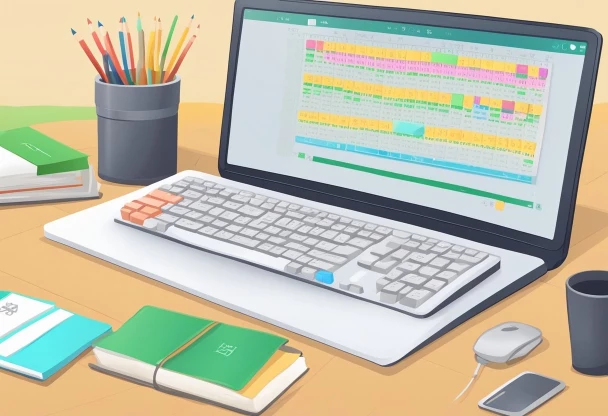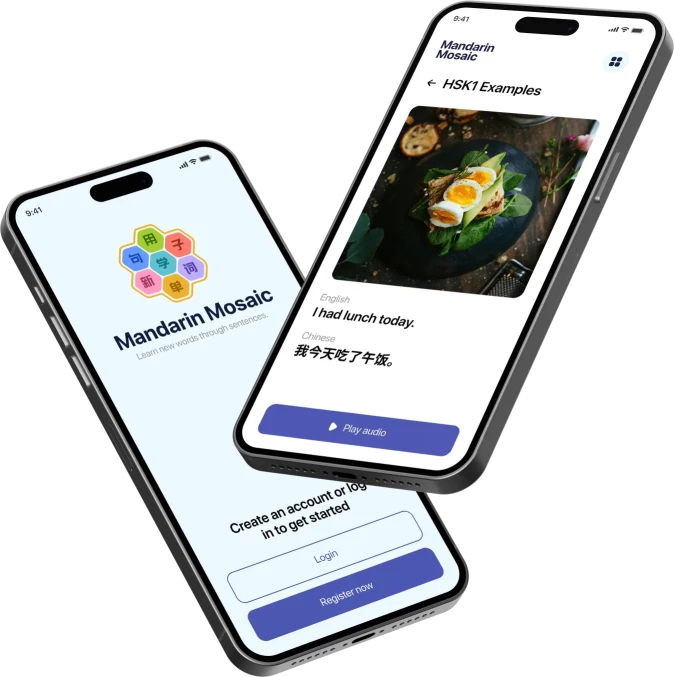Learning Chinese through Comprehensible Input: A Laid-back Approach to Mastering Mandarin
Learning Chinese can be a daunting task, but there's a method that could make your journey smoother and more enjoyable. Comprehensible input is an approach that focuses on exposing you to Chinese language content that's just slightly above your current level. By immersing yourself in material that's challenging yet understandable, you can accelerate your learning and improve your comprehension naturally.

This method isn't about memorising endless lists of vocabulary or drilling grammar rules. Instead, it's about engaging with Chinese in a way that feels natural and meaningful. You might watch videos, read stories, or listen to podcasts that are tailored to your level. The key is to find content that's interesting to you and that you can mostly understand, with just a few new words or phrases to stretch your abilities.
By using comprehensible input, you can develop a more intuitive grasp of Chinese. You'll start to pick up on patterns and nuances without explicitly studying them. This approach can be particularly effective for improving your listening and reading skills, which in turn can boost your speaking and writing abilities.
Key Takeaways
- Engage with Chinese content slightly above your current level to improve naturally
- Choose materials that interest you to maintain motivation and enjoyment
- Focus on understanding the overall message rather than every single word
Understanding Comprehensible Input

Comprehensible input forms the cornerstone of effective language learning. It's a powerful concept that can revolutionise your approach to mastering Chinese.
The Basics of the Input Hypothesis
The input hypothesis suggests that you acquire language by understanding messages. It's not about studying grammar rules or memorising vocabulary lists. Instead, you learn naturally by being exposed to language that's slightly above your current level.
This approach mimics how children learn their first language. You don't need to produce the language right away. Instead, you focus on understanding the input you receive. As you encounter new words and structures in context, your brain starts to make connections.
Here's a simple breakdown of the process:
- You receive input that's comprehensible but challenging
- Your brain processes this new information
- Over time, you internalise the language patterns
Role of Comprehensible Input in Language Acquisition
Comprehensible input plays a crucial role in how you acquire Chinese. It's not just about understanding; it's about acquiring language naturally and effortlessly.
When you're exposed to comprehensible input, you're not consciously studying the language. Instead, you're absorbing it through context and meaningful communication. This method helps you develop a feel for the language, much like how native speakers intuitively know what "sounds right".
For Chinese learners, this might involve:
- Watching Chinese films with subtitles
- Reading graded readers at your level
- Listening to podcasts designed for learners
Remember, it's okay if you don't understand everything. As long as you grasp about 85% of the content, you're on the right track.
Professor Stephen Krashen's Contribution
Professor Stephen Krashen, a renowned linguist, developed the concept of comprehensible input. His work has significantly influenced language teaching methods worldwide.
Krashen's theory emphasises that language acquisition happens when you understand messages, not when you're forced to speak before you're ready. He argues that speaking emerges naturally after you've had enough comprehensible input.
Key points from Krashen's theory:
- The "i+1" concept: Input should be slightly above your current level
- The affective filter: Low anxiety environments promote better learning
- The monitor hypothesis: Conscious learning acts as an editor, not an acquirer
By applying Krashen's principles, you can create a more effective and enjoyable Chinese learning experience. Focus on understanding meaningful content, and you'll find your Chinese skills improving naturally over time.
Practical Strategies for Learning Chinese

Learning Chinese through comprehensible input involves engaging with materials just above your current level. This approach enhances your understanding and retention of the language.
Graded Readers and Their Significance
Graded readers are fantastic tools for learning Mandarin Chinese. These books are specifically designed to match your proficiency level, gradually introducing new vocabulary and grammar structures.
Start with readers tailored to your current abilities. As you progress, move on to more challenging texts. This method ensures you're constantly exposed to comprehensible input.
Graded readers often come with audio recordings. Listen to these while reading to improve your pronunciation and listening skills simultaneously.
Try setting a goal to read one graded reader per week. This consistent exposure will significantly boost your Chinese vocabulary and reading comprehension.
Leveraging Chinese Podcasts for Improved Comprehension
Chinese podcasts are brilliant for enhancing your listening skills. Look for podcasts that offer comprehensible input at your level.
Start with podcasts designed for beginners if you're new to Mandarin. These often include English explanations and slower speech.
As you advance, transition to intermediate-level podcasts. These typically feature natural conversations at a moderate pace.
Listen actively by jotting down new words or phrases. Try to guess their meanings from context before looking them up.
Consider podcasts that discuss topics you're passionate about. This makes learning more enjoyable and relevant to your interests.
Incorporating Chinese into Everyday Life
Immerse yourself in Chinese by integrating it into your daily routine. Change your phone's language settings to Chinese for a constant learning opportunity.
Watch Chinese films or TV shows with subtitles. Start with English subtitles, then progress to Chinese subtitles as you improve.
Label objects around your home with their Chinese names. This visual reinforcement helps cement vocabulary in your mind.
Find a language exchange partner online. Regular conversations with native speakers provide authentic, comprehensible Chinese input.
Use Chinese social media platforms like WeChat or Weibo. Even brief interactions in Chinese can significantly enhance your language skills.
Maximising Motivation and Fluency

Staying motivated and achieving fluency are crucial aspects of learning Chinese through comprehensible input. These elements work hand-in-hand to help you progress in your language journey and reach your goals.
The Importance of Motivation in Language Learning
Motivation is the driving force behind successful language acquisition. When learning Chinese, it's essential to find ways to keep yourself engaged and excited about the process. Here are some effective strategies:
- Set achievable goals: Break down your learning into manageable chunks.
- Celebrate small victories: Acknowledge your progress, no matter how small.
- Connect with native speakers: Exposure to understandable messages in Chinese can boost your motivation.
Remember, intrinsic motivation (personal interest and enjoyment) tends to be more powerful than extrinsic motivation (external rewards). Find aspects of Chinese culture that genuinely interest you, whether it's cuisine, history, or pop culture.
Achieving Fluency through Regular Practice
Fluency comes from consistent exposure and practice with the target language. To improve your Chinese fluency:
- Immerse yourself daily: Listen to Chinese podcasts, watch Chinese films, or read Chinese books.
- Use spaced repetition: Review vocabulary and grammar regularly to reinforce your learning.
- Focus on comprehensible input: Choose materials that are just above your current level to challenge yourself without becoming overwhelmed.
Don't be afraid to make mistakes. They're a natural part of the learning process. The more you practise, the more comfortable you'll become with the language. Remember, fluency isn't about perfection; it's about effective communication.
Frequently Asked Questions

Learning Chinese through comprehensible input raises many common questions. Let's address some key concerns about getting started, finding resources, and developing fluency.
What's the best way to start learning Chinese if I'm a complete beginner?
As a complete beginner, you might find it helpful to start with simple audio materials designed for learners. Look for content that includes both Pinyin and characters, along with English translations.
Try listening to short dialogues or stories multiple times. Focus on understanding the overall meaning rather than every word. This approach helps you build a foundation in Chinese naturally.
Are there any good resources for finding Chinese audio for listening practice?
You can find a wealth of Chinese audio resources online. Podcasts for learners, such as ChinesePod or Slow Chinese, offer content at various levels.
YouTube channels like Mandarin Corner provide videos with subtitles. Audiobooks in simplified Chinese can also be a great source of listening material as you progress.
How can I practice conversational Chinese effectively?
To practise conversational Chinese, try language exchange apps like HelloTalk or Tandem. These connect you with native speakers for mutual language learning.
Consider joining online Chinese conversation groups or finding a language partner. Regular practice with native speakers helps improve your speaking skills and cultural understanding.
Is it actually possible to learn a language just through listening and comprehension?
While it's possible to make significant progress through listening and comprehension, most learners benefit from a balanced approach. Comprehensible input is a powerful tool, but it's often most effective when combined with other learning methods.
Speaking and writing practice help reinforce what you've learned through listening. They also develop different language skills that are crucial for overall fluency.
What's the most effective strategy for immersing oneself in Chinese to improve fluency?
Immersion is key to improving fluency. Try to surround yourself with Chinese as much as possible. Watch Chinese films and TV shows with subtitles, listen to Chinese music, and read simple Chinese texts.
If possible, spend time in a Chinese-speaking environment. Short-term language programmes or trips to China can significantly boost your language skills through real-world practice.
How difficult is it to reach conversational fluency in Chinese for a non-native speaker?
Reaching conversational fluency in Chinese can be challenging, but it's absolutely achievable with consistent effort. The tonal nature of the language and the writing system can be initial hurdles.
However, with regular practice and exposure to comprehensible input, many learners achieve conversational fluency within 1-2 years of dedicated study. Your progress will depend on factors like study time, immersion, and individual aptitude.

